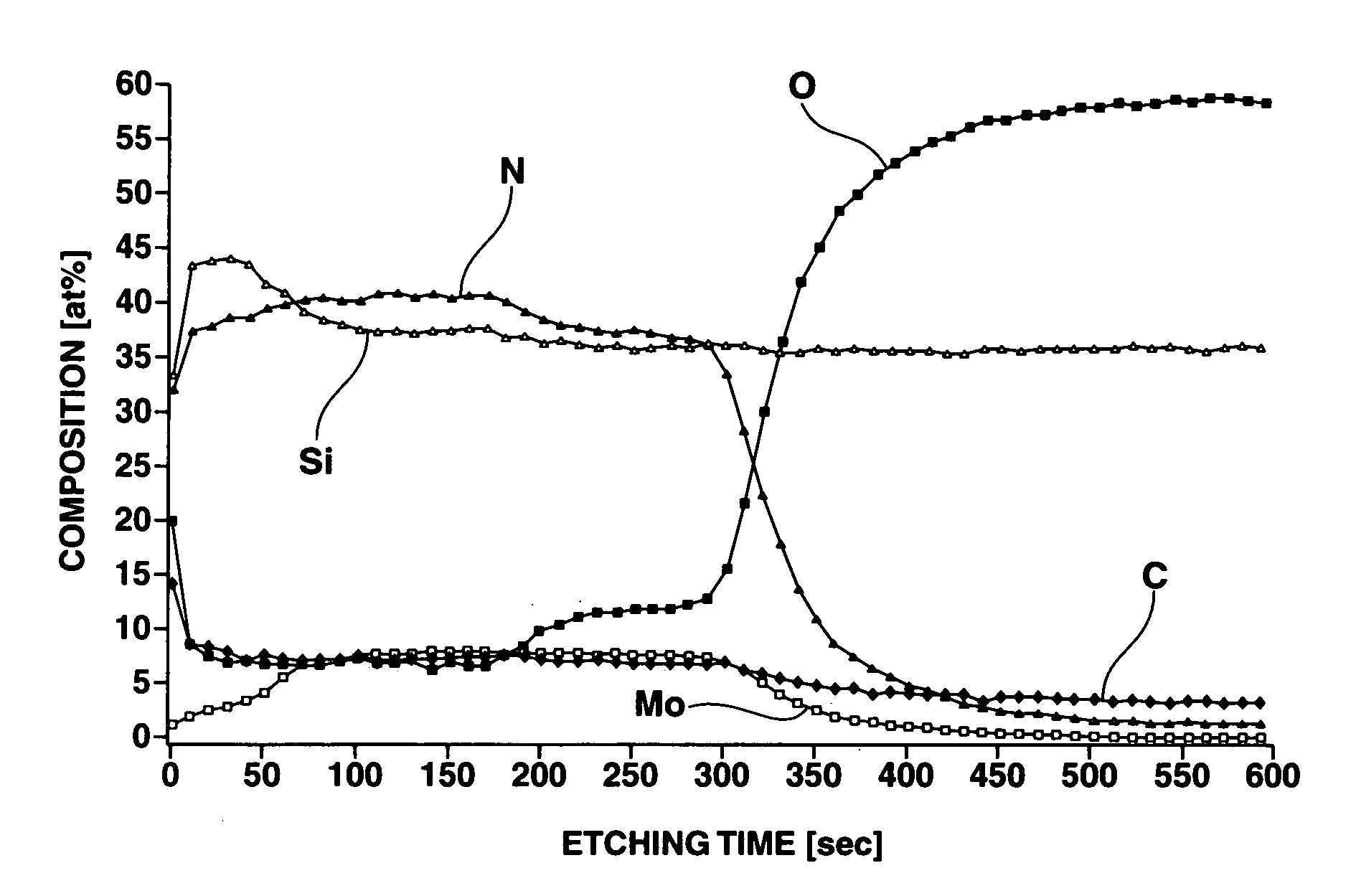Preparation of photomask blank and photomask
- Summary
- Abstract
- Description
- Claims
- Application Information
AI Technical Summary
Benefits of technology
Problems solved by technology
Method used
Image
Examples
example
[0059] Examples of the invention are given below by way of illustration and not by way of limitation.
examples 1 to 5
[0060] A halftone phase shift film of MoSiON was deposited on a square quartz substrate of 6 inches on one side by reactive DC sputtering of a MoSi target such that at the end of flash lamp irradiation, the film might have a phase shift of 1800 relative to exposure light (ArF excimer laser: 193 nm), a transmittance of 6% with respect to exposure light (provided that the bare substrate had a transmittance of 100% with respect to exposure light), and a thickness of about 700 angstroms.
[0061] The substrate having the halftone phase shift film deposited thereon was heated at a temperature of 80° C., and then irradiated with light from a xenon flash lamp at an energy density reported in Table 1. The flash lamp was operated to produce flashes of light having a duration of about 1 to 10 msec by controlling the voltage. The irradiation included a single flash of light (the same being true in the following examples). The stress in the film before and after the flash lamp irradiation was det...
example 6
[0074] A halftone phase shift film of MoSiON was deposited on a substrate as in Example 1 except that the transmittance was set at 20%, and then irradiated with flash lamp light as in Example 1 except that the flash lamp irradiation was made at the energy density reported in Table 4. The film stress before and after the irradiation was determined, with the results shown in Table 4.
PUM
| Property | Measurement | Unit |
|---|---|---|
| Temperature | aaaaa | aaaaa |
| Time | aaaaa | aaaaa |
| Time | aaaaa | aaaaa |
Abstract
Description
Claims
Application Information
 Login to View More
Login to View More - R&D
- Intellectual Property
- Life Sciences
- Materials
- Tech Scout
- Unparalleled Data Quality
- Higher Quality Content
- 60% Fewer Hallucinations
Browse by: Latest US Patents, China's latest patents, Technical Efficacy Thesaurus, Application Domain, Technology Topic, Popular Technical Reports.
© 2025 PatSnap. All rights reserved.Legal|Privacy policy|Modern Slavery Act Transparency Statement|Sitemap|About US| Contact US: help@patsnap.com


